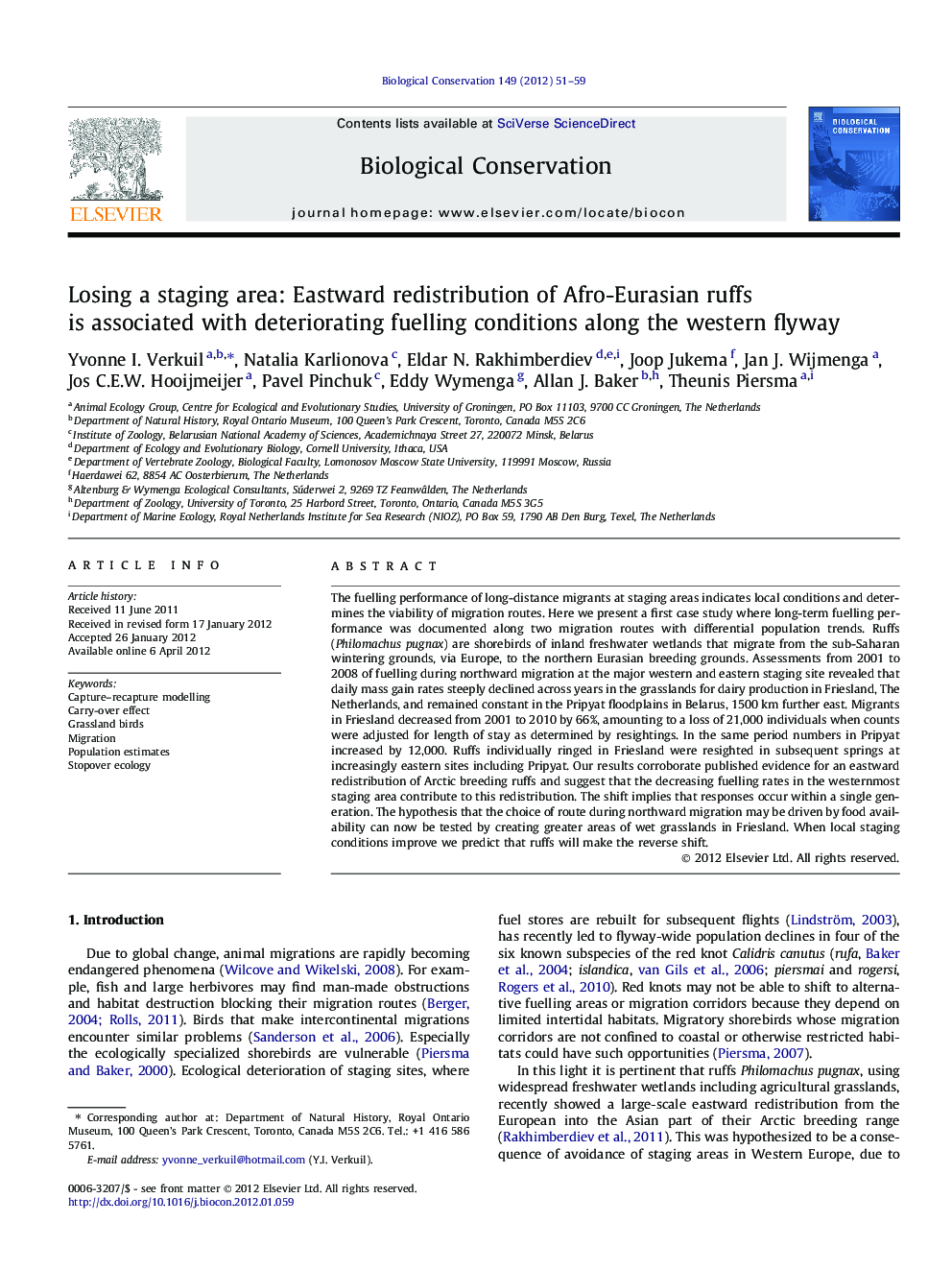| کد مقاله | کد نشریه | سال انتشار | مقاله انگلیسی | نسخه تمام متن |
|---|---|---|---|---|
| 4385325 | 1304532 | 2012 | 9 صفحه PDF | دانلود رایگان |

The fuelling performance of long-distance migrants at staging areas indicates local conditions and determines the viability of migration routes. Here we present a first case study where long-term fuelling performance was documented along two migration routes with differential population trends. Ruffs (Philomachus pugnax) are shorebirds of inland freshwater wetlands that migrate from the sub-Saharan wintering grounds, via Europe, to the northern Eurasian breeding grounds. Assessments from 2001 to 2008 of fuelling during northward migration at the major western and eastern staging site revealed that daily mass gain rates steeply declined across years in the grasslands for dairy production in Friesland, The Netherlands, and remained constant in the Pripyat floodplains in Belarus, 1500 km further east. Migrants in Friesland decreased from 2001 to 2010 by 66%, amounting to a loss of 21,000 individuals when counts were adjusted for length of stay as determined by resightings. In the same period numbers in Pripyat increased by 12,000. Ruffs individually ringed in Friesland were resighted in subsequent springs at increasingly eastern sites including Pripyat. Our results corroborate published evidence for an eastward redistribution of Arctic breeding ruffs and suggest that the decreasing fuelling rates in the westernmost staging area contribute to this redistribution. The shift implies that responses occur within a single generation. The hypothesis that the choice of route during northward migration may be driven by food availability can now be tested by creating greater areas of wet grasslands in Friesland. When local staging conditions improve we predict that ruffs will make the reverse shift.
Figure optionsDownload as PowerPoint slideHighlights
► We studied ruffs along two migration routes through Europe from 2001 to 2010.
► In Netherlands cultivated grasslands, fuelling rates and population size declined.
► In Belarusian floodplains, fuelling rates were stable and the population increased.
► Along the western migration route, management for wetter grasslands is needed.
Journal: Biological Conservation - Volume 149, Issue 1, May 2012, Pages 51–59